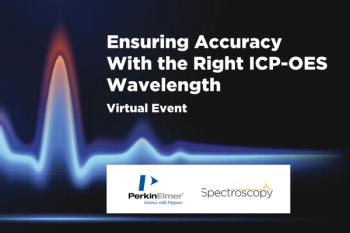
Emerging Contaminants and the Future of Inorganic Analysis
Webinar Date/Time: Mon, Dec 1, 2025 11:00 AM EST
Hidden contaminants can influence inorganic trace elemental testing. Discover the ways in which these emerging contaminants like microbes, microplastics and PFAS can affect analytical methods.
Register Free:
Event Overview:
From PFAS and microplastics to microbiological and environmental interferences, new sources of contamination are challenging traditional inorganic analytical methods. This webinar explores how modern laboratories can evolve their analytical workflows to identify and mitigate emerging threats. Through examples from spectroscopy and mass spectrometry applications, attendees will learn how to extend existing ICP, ICP-MS, and IC techniques beyond classic elemental analysis to address real-world contamination. The session will also discuss how high-purity reference materials and robust QC protocols are essential for accurate detection, traceability, and regulatory compliance.
Key Learning Objectives:
- Identify major emerging contaminants affecting inorganic analysis
- Understand analytical techniques adapted for complex new threats
- Apply best practices for contamination control and data accuracy
Who Should Attend:
- Laboratory directors, analytical chemists, and QA/QC managers
- Scientists in environmental, food, and material testing labs
- Researchers using ICP, ICP-MS, IC, or other inorganic techniques
Speaker:
Patricia Atkins
Senior Global Product Manager
Spex
Patricia Atkins is senior global product manager and former R&D senior applications scientist at Spex. A Rutgers University graduate, she previously managed laboratories at Ciba Specialty Chemicals and Rutgers’ Civil & Environmental Engineering Department. Patricia contributes to AOAC, ASTM, ACIL, and NACRW, and is a frequent conference speaker and published author in Spectroscopy, LCGC, and Cannabis Science and Technology.
Register Free:
Newsletter
Get essential updates on the latest spectroscopy technologies, regulatory standards, and best practices—subscribe today to Spectroscopy.





